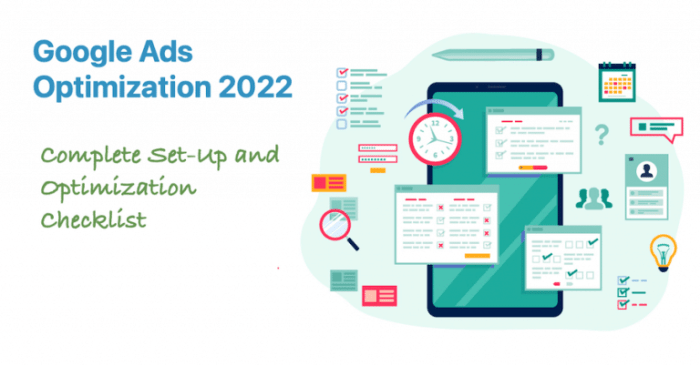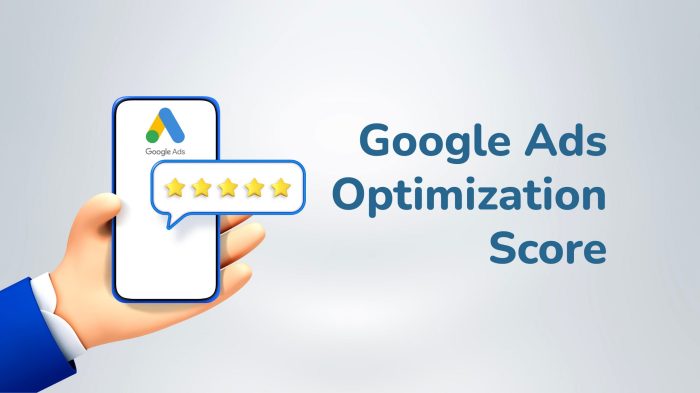Google Ads Optimization takes center stage in the digital marketing world, where businesses strive to enhance their online presence and drive conversions. From understanding performance metrics to refining targeting strategies, this guide dives deep into the art of optimizing Google Ads for maximum impact.
Get ready to elevate your advertising game with cutting-edge strategies and expert insights that will set your campaigns apart from the competition.
Introduction to Google Ads Optimization

Google Ads Optimization is the process of refining and improving your Google Ads campaigns to maximize their performance and effectiveness. By analyzing data, making strategic adjustments, and testing different elements, businesses can enhance their ad campaigns to reach the right audience and achieve their advertising goals.
Importance of Google Ads Optimization
Optimizing Google Ads is crucial for businesses looking to increase their online visibility, drive more traffic to their websites, and ultimately boost sales and conversions. It allows companies to make the most out of their advertising budget and ensure that their ads are reaching the right people at the right time.
- Targeting the Right Audience: By optimizing Google Ads, businesses can target specific demographics, interests, and behaviors of their target audience, increasing the chances of converting leads into customers.
- Improving Ad Relevance: Optimizing ad copy, s, and landing pages can improve ad relevance and quality score, leading to higher ad rankings and lower costs per click.
- Maximizing ROI: Through continuous optimization, businesses can identify what works best for their campaigns, allocate budget effectively, and achieve a higher return on investment.
Understanding Google Ads Performance Metrics
In the world of online advertising, it’s crucial to understand the various performance metrics that can help gauge the success of your Google Ads campaigns. These metrics provide valuable insights into how well your ads are performing and where improvements can be made to optimize results.
Important Performance Metrics:
Click-Through Rate (CTR)
- CTR is the percentage of people who click on your ad after seeing it.
- A higher CTR indicates that your ad is relevant to your target audience.
- Low CTR may suggest that your ad copy or targeting needs adjustments.
Conversion Rate
- Conversion rate measures the percentage of users who take the desired action after clicking on your ad.
- A higher conversion rate indicates that your ad is effectively driving actions like purchases, sign-ups, or inquiries.
- Low conversion rate may point to issues with landing page experience or ad messaging.
Quality Score
- Quality Score is Google’s rating of the quality and relevance of your s, ads, and landing pages.
- A higher Quality Score can lead to lower costs and better ad placements.
- Improving Quality Score involves optimizing relevance, ad copy, and landing page experience.
Tips for Interpreting Performance Metrics:
- Regularly monitor performance metrics to track the effectiveness of your campaigns.
- Compare metrics over time to identify trends and areas for improvement.
- Use A/B testing to experiment with different ad creatives, targeting options, and landing pages to optimize performance.
Targeting Strategies for Google Ads Optimization

Targeting is a crucial aspect of Google Ads campaigns as it helps reach the right audience with the right message at the right time. By focusing on targeting, advertisers can maximize their ad spend and improve campaign performance.
When it comes to audience targeting in Google Ads, best practices include defining specific target audiences based on demographics, interests, behaviors, and online activities. By understanding who your ideal customers are, you can tailor your ads to resonate with them and drive better results.
Using Demographics and Interests for Better Targeting
- Utilize Google Ads’ demographic targeting options to reach users based on age, gender, income, education, and more. This helps ensure your ads are shown to the most relevant audience.
- Tap into audience interests by targeting users who have shown interest in specific topics, products, or services related to your business. This can help increase engagement and conversions.
- Combine demographic and interest targeting to create custom audiences that are more likely to convert. By refining your targeting criteria, you can improve the effectiveness of your ads.
Successful Targeting Strategies for Google Ads
- Geo-targeting: Target users based on their location to drive foot traffic to physical stores or reach audiences in specific regions.
- Remarketing: Reach users who have previously interacted with your website or ads, increasing the likelihood of conversion.
- Audience targeting: Use Google’s audience targeting options to reach users based on their browsing behavior, interests, and online activities.
- Lookalike audiences: Expand your reach by targeting users who are similar to your existing customers, increasing the chances of acquiring new leads.
Ad Copy and Creative Optimization: Google Ads Optimization
When it comes to Google Ads, having compelling ad copy is crucial for capturing the attention of your target audience and driving conversions. Your ad copy is the first impression potential customers will have of your brand, so it needs to be engaging, informative, and persuasive.
Significance of Compelling Ad Copy
Creating ad copy that stands out from the competition can make all the difference in the success of your Google Ads campaigns. Compelling ad copy not only grabs the attention of users but also entices them to click through to your website. By highlighting the unique value propositions of your products or services and using strong calls to action, you can increase the likelihood of converting those clicks into sales.
Role of Creative Elements
In addition to well-crafted ad copy, creative elements such as images, videos, and ad extensions play a significant role in optimizing Google Ads. These elements help to visually engage users and provide additional information about your offerings. By incorporating visually appealing and relevant creative elements, you can enhance the overall impact of your ads and increase their effectiveness.
Tips for Writing Effective Ad Copy
– Keep your ad copy concise and to the point.
– Highlight the unique selling points of your products or services.
– Use compelling language and strong calls to action.
– Tailor your ad copy to specific audience segments.
– Test different variations to see what resonates best with your target audience.
A/B Testing for Ad Copy and Creative Optimization
A/B testing is a valuable tool for optimizing ad copy and creative elements in Google Ads. By creating multiple versions of your ads and testing them against each other, you can identify which variations perform best and make data-driven decisions to improve campaign performance. Experiment with different headlines, descriptions, images, and calls to action to see what resonates most with your audience and drives the highest conversion rates.
